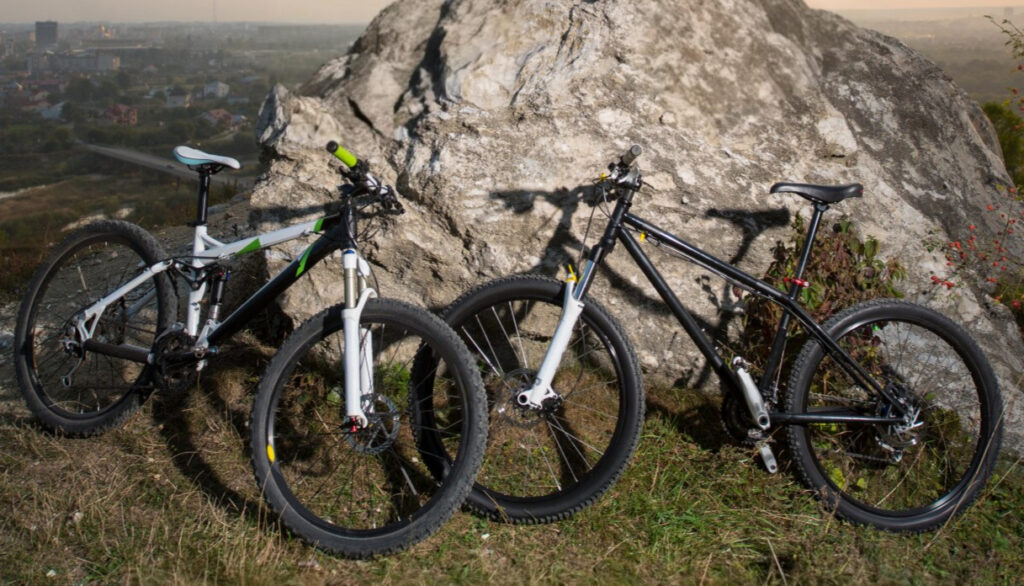Understanding Full Suspension Mountain Bikes
If you are new to mountain biking or just diving into the specifics of bike types, full suspension bikes might catch your eye. These bikes are designed with both front and rear suspension systems, which means they can absorb shock from rough terrain. That’s pretty cool, especially if you love tackling trails that are bumpy and unpredictable.
How Do They Work?
The basic idea is simple: when you hit a bump or drop, the suspension helps keep your wheels on the ground. This results in better traction and control, making it easier to stay on track. This setup also helps minimize fatigue because your body doesn’t have to absorb all those shocks alone. Instead, the bike does the heavy lifting, letting you focus on enjoying the ride.
Pros of Full Suspension Bikes
- Comfort: With dual suspension, you’ll feel much more comfortable tackling rocky paths or steep descents.
- Control: You’ll have better wheel contact with the ground, which significantly improves handling.
- Versatility: These bikes are great for various terrains, from technical trails to downhill tracks.
Cons of Full Suspension Bikes
- Weight: They tend to be heavier than rigid bikes due to the extra components.
- Cost: Full suspension bikes can be pricier. It’s not uncommon to pay significantly more than you would for a rigid bike.
- Maintenance: More moving parts mean more things can go wrong and need upkeep.
Diving into Rigid Mountain Bikes
On the other side of the spectrum, we have rigid mountain bikes, which are designed without any suspension at all. They might seem old-fashioned to some, but trust me, they have their unique charm and a bunch of perks. It’s easy to love them once you get the hang of it!
What Makes Them Unique?
Rigid bikes are all about simplicity. They usually feature a solid frame, and their design can make for a lighter and more responsive ride. If you enjoy a direct connection with the trail and love the feel of every little bump, a rigid bike might just be your jam.
Pros of Rigid Bikes
- Lightweight: Without the extra suspension components, these bikes are generally lighter and easier to handle.
- Cost-effective: They are typically cheaper than full suspension bikes, making them a great choice for beginners.
- Low Maintenance: Fewer moving parts mean there is less to maintain and repair.
Cons of Rigid Bikes
- Less Comfort: It can get bumpy on rough trails, and you might feel every bump along the way.
- Traction: You may struggle for grip on rough or steep descents as the rear wheel can lose touch with the ground.
- Limited Versatility: They are best suited for smoother trails and are not ideal for more technical riding.
Choosing the Right Option for You
Narrowing it down between full suspension and rigid bikes can sometimes feel overwhelming, but it really boils down to a few key considerations. There is no one-size-fits-all answer, so let’s explore what you should think about.
Your Riding Style
Your personal riding style plays a huge role in this decision. Are you more of a casual rider looking for evening strolls on gentle trails? A rigid bike could be just what you need. However, if you find yourself aggressively tackling downhill courses or rocky terrain, a full suspension bike might better suit those adventures.
Your Environment
The type of trails you frequent is another major factor. If the landscape is filled with technical challenges and rugged paths, a full suspension bike can help you navigate those obstacles more effectively. However, if you mostly ride on well-maintained dirt paths or paved surfaces, a rigid bike can handle the job just fine.
Your Budget
Let’s talk money. If you are budget-conscious and just starting, a rigid bike is usually more affordable and a solid choice for beginners. With less investment, you can still enjoy mountain biking without breaking the bank. Once you get more serious, you can always upgrade to a fancier full suspension model.
Fitness Level
Your fitness level can also make a difference. Rigid bikes require more physical effort to handle shocks and climbs, so if you are just getting into biking or are working on building endurance, it might push you a bit more than you expect. Conversely, full suspension bikes can give you a break and allow you to focus more on your technique.
My Personal Experience
Now, everyone has their preferences, and that’s what makes this journey fun! I started with a rigid bike, thinking it was the best way to build endurance and learn the ropes. It was a decent choice for the smooth paths near my home, but once I hit some rough trails, my backside paid for it dearly!
After much deliberation, I got my first full suspension bike. Wow, what a game changer! Suddenly, descents felt smoother, and I found myself grinning ear to ear while whipping around corners I previously wouldn’t dream of tackling. Now, I enjoy rides no matter where I end up because I know my full suspension bike has my back.
Conclusion
Both full suspension and rigid mountain bikes have their own merits, catering to different preferences and riding styles. The key takeaway is to assess your own needs: where you ride, how you ride, and what you want from your biking experience. Whether you decide on the comfort of full suspension or the simplicity of rigid, enjoying the ride is what it’s all about. So get out there, pedal away, and embrace the exhilaration of the trails!






